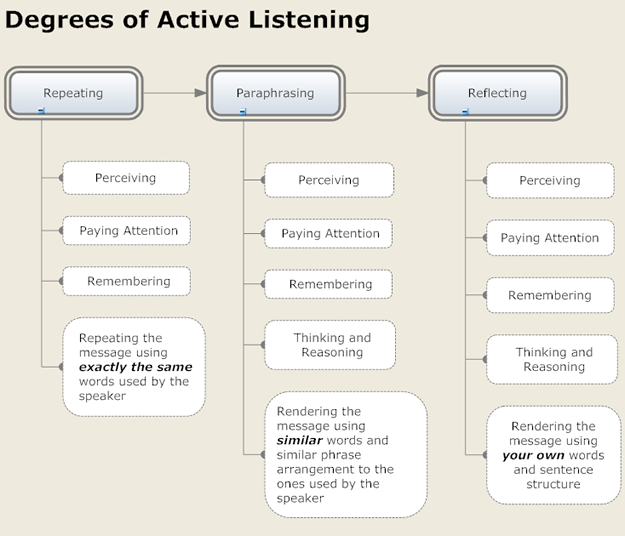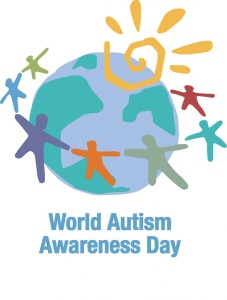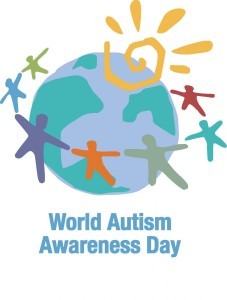 It seems obvious that young children with autism struggle with many tasks because of deficits with gross and fine motor skills, sensory processing issues, language delays and more. Naturally, this affects how they interact with their peers. In most cases, an autistic child receives support, therapy and modifications in school to assist with these struggles.
It seems obvious that young children with autism struggle with many tasks because of deficits with gross and fine motor skills, sensory processing issues, language delays and more. Naturally, this affects how they interact with their peers. In most cases, an autistic child receives support, therapy and modifications in school to assist with these struggles.
But what happens when you’re a teen or young adult with autism and you’re expected to simply “know” how to do certain things? It’s the little things in life that come easy to us that we take for granted. Once a child is out of school, resources dry up. Parents can teach life skills and social skills as best they can, but we can’t think of every possible scenario that might occur and help our transitioning children prepare for the challenges of adulting.
This list I’ve compiled is just a snapshot into some everyday situations that my children struggle with. Being less proficient at simple life tasks could profoundly affect the way they interact with the world. As parents, we need to continually support and prepare our children. As emergency responders, we need to be aware of these types of everyday struggles, as they can cause a scene to go south quickly if misinterpreted.
- Haircuts / Grooming. My son has an extremely sensitive nervous system. Many times for no reason his body feels antsy and overactive, like a million bugs are crawling in his skin. Simple tags on clothing feel like cactus needles on his back. A light pat on the shoulder feels like a taser shock. Haircuts and trimming nails have been an issue with him from infancy. Now, at 15 years old, 9” taller than me and approximately 250 pounds, I can no longer strap him to a chair with belts to cut his hair (don’t judge!). He will fight me if I bring the scissors or buzzer near him. He isn’t being spoiled or malicious, it HURTS to get his haircut. He tries to behave if I bring him to a barber, but he can’t help the wincing and jerking reactions to what we consider a routine activity. As far as his nails go, I still have to wait until he is asleep to cut them! Responder tip: light touch could cause an extreme reaction.
- Driving / Night Driving. I don’t know that either of my children will be able to drive. I am going to work with my 19-year old daughter some more, but it is an extreme struggle for her. Her depth perception is skewed, making it seem like cars that are two lanes away are about to hit us. That can spell trouble on these already crazy Atlanta streets. My son simply doesn’t have the reaction time or ability to process simultaneous tasks in order to operate a motor vehicle. Another adult autistic friend of mine does drive, but finds night driving an extreme challenge. This is a simple task we take for granted. When I was growing up, the second you turned 15 you got your Learner’s Permit and your license followed as soon as you were eligible to take the test. As a parent, I am dealing with still having to chauffeur my children around as young adults. Responder tip: remember that someone with autism may struggle with depth perception, reaction time, multi-tasking and night vision. This increases the risk for MVCs.
- Making Phone Calls. I was shy as a child. Making calls to businesses or even a new friend was terrifying. Of course, there were no cell phones or texting back then so you HAD to interact with people on the phone… without caller ID! Nervousness and shyness are not the same struggles as my kids have on the phone. When we are at a restaurant or store I make them order or pay to help foster interactions with strangers. Phone calls are difficult. It takes writing out a list of questions with all possible outcomes in order to successfully make a quick call to find out something about a store’s hours or make an appointment. Now, picture how many times we, as adults, have to call our insurance company or a utility company for an error on our bill or a coverage question. Think about the automated menu, what number to press, getting someone live finally and trying to explain your situation, getting told incorrect information and having the ability to ascertain that you can get a better outcome if you ask for a manager or escalate the issue. I picture my daughter trying to argue with one of those companies that automatically charges you for products you canceled… noooooope. Responder tip: be prepared for nervousness and complete shutdown over the phone.
- Strangers Knocking on the Door. This is a BIG ONE. It took some major conditioning, social stories, and active drills to get my son to stop opening the door to everyone! I work nights and sleep during the day. There are myriad times when my children are the ones awake to hear someone at the door. Unfortunately, this neighborhood has experienced multiple break-ins and gunshots are often heard nearby. It has been my experience that people with autism are typically trusting and take people’s word at face value. I have had someone knock on the door telling me they were someone I knew, all the while shaking and turning the knob trying to force the door open. I was fortunate to be home and to be the one on the other side of the door with my Glock 36. What if it were my son? I shudder to think of potential outcomes if my children readily open the door to strangers. Responder tip: identify yourself clearly when knocking on a residence door. Be prepared for anything.
- Accident or Injury. My daughter’s autism manifests in a lot of anxiety and OCD. This is a good trait when it comes to safety. I’d much rather her call me for every little concern than to do what my son does. He spends a lot of time in his room on his computer. If he injures himself in any way, he simply shuts down right where he is. He doesn’t think to “come get mom” or call for help in any way. Nor does he know how to handle an injury. So he sits there in pain, or in some cases, bleeding, and no one knows. Most of the time my daughter and I frequently check on him in his room, kind of like making rounds, ha ha. BUT what about when I’m at work or asleep? He will not come wake me. The thought of a more serious accident or injury occurring without him understanding to call me, or his sister – or 911 depending on the severity – is terrifying. We continue to work on this daily. Responder tip: do not discount a behavior because a “typical person” should know better.
- Job Interviews. It’s that time… my children are about to be 16 and 20 in March. They were fortunate enough to get a private part time job briefly last year helping out a lovely lady with some yard work. It was a nice introduction to exchanging hours for cash. It was flexible. The work was hard, but the employer allowed for frequent breaks and many questions. There really isn’t a resource that helps neurotypical people prepare for job interviews, let alone people with autism. When coaching my children for interviews it’s hard to predict some of the non-standard questions that might come up. Some common autism traits include blunt honesty, lack of a conversation filter, and the inability to recognize any kind of sarcasm, idioms, etc. Phrases like “hold your horses” and “killing two birds with one stone” are taken at face value. This makes job interviews a challenge. Answering questions, knowing the right things to say, and abstaining from over sharing are tasks that do not come naturally. It’s another obstacle to overcome. Responder tip: speak slowly and clearly, and only use words that have one meaning if possible.
- A Routine Traffic Stop. My children do not drive, as I wrote earlier, but when doing some research I read a story about a young adult that got pulled over for some erratic driving. The officer asked him if he took any drugs. The young man, 23, took his vitamins that day. He knows that you buy vitamins in a drug store; he said yes, he took drugs, meaning his daily vitamins. He was immediately cuffed and taken into custody. The young man did not understand what was happening. It wasn’t until he was able to call his caregiver that the situation was straightened out. Responder tip: you may have to dig a little deeper with routine questions to get the full picture.
- Hygiene / Bathroom Issues. There are no parenting books on potty training a man-sized teenager. Yeah, not fun to discuss. My son had a bowel obstruction a few years ago that was traumatic for him. As a result, his body automatically holds it when he has to make a bowel movement. His sensory issues prevent him from feeling the urge to go until it is too late. And it becomes a self-perpetuating cycle to boot – he fears the experience to be painful so he holds it, which causes the experience to be painful. And round and round we go. GI issues are already commonplace with autism, as are food allergies and sensitivities. I have read on many parenting forums that my son’s issue is not unique. So as a responder in the field, you may encounter young adults that have bathroom issues. Responder tip: do not assume anything about the household situation until you get a full clinical picture.
- Picky Eating. “Children won’t starve themselves if you serve them food they don’t like.” Ha! Dr. Spock and all the other parenting experts don’t know my daughter. As a toddler she went five full days without eating when I tried to get her to eat a simple meal that was outside of her three acceptable foods. In fourth grade, she went on a camping field trip with her classmates. She was not allowed to bring her own food. I figured that being around her peers, being outside and doing activities, and not having access to her favorite foods would mean she would get over her picky eating. Silly rabbit… she didn’t eat or drink for the entire three-day trip. She is about to turn 20 and eats four foods. And God help us, they must be the right brand! If it’s pizza the crust can’t be thin, it can’t be too cheesy, the pepperoni can’t be the spicy kind… she has the palate of a sommelier. This is commonplace with autism because it’s not just about “kid approved” foods vs. healthy dishes. It’s about routine, sensory issues, texture, food allergies or sensitivities… there’s so much more here than meets the eye. Going out to eat, social gatherings around food… these are routine to us. But it is a source of anxiety for my daughter. I try to let her view the menu online if we are going somewhere. If there is nothing she likes I let her make something herself and bring it. It puts the ownership on her. It is still a struggle for her and it can be awkward in social situations, making her feel yet another reason that she is “too different” to fit in at times.
Adulting is hard as it is! But these are some standard, everyday activities that my children currently struggle with. How about you? What are some of your experiences that didn’t make my list? Or if you can relate to any of these, what things have worked in your household? Be sure to comment below!

















